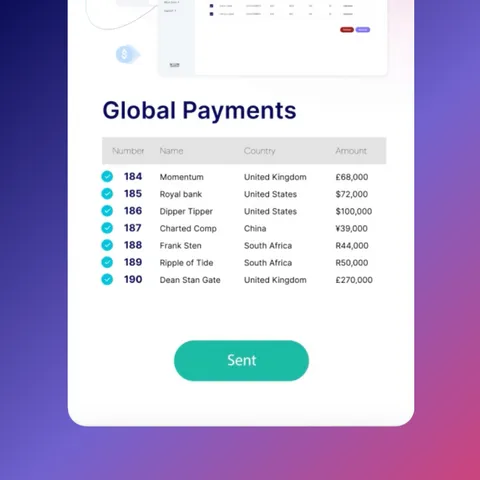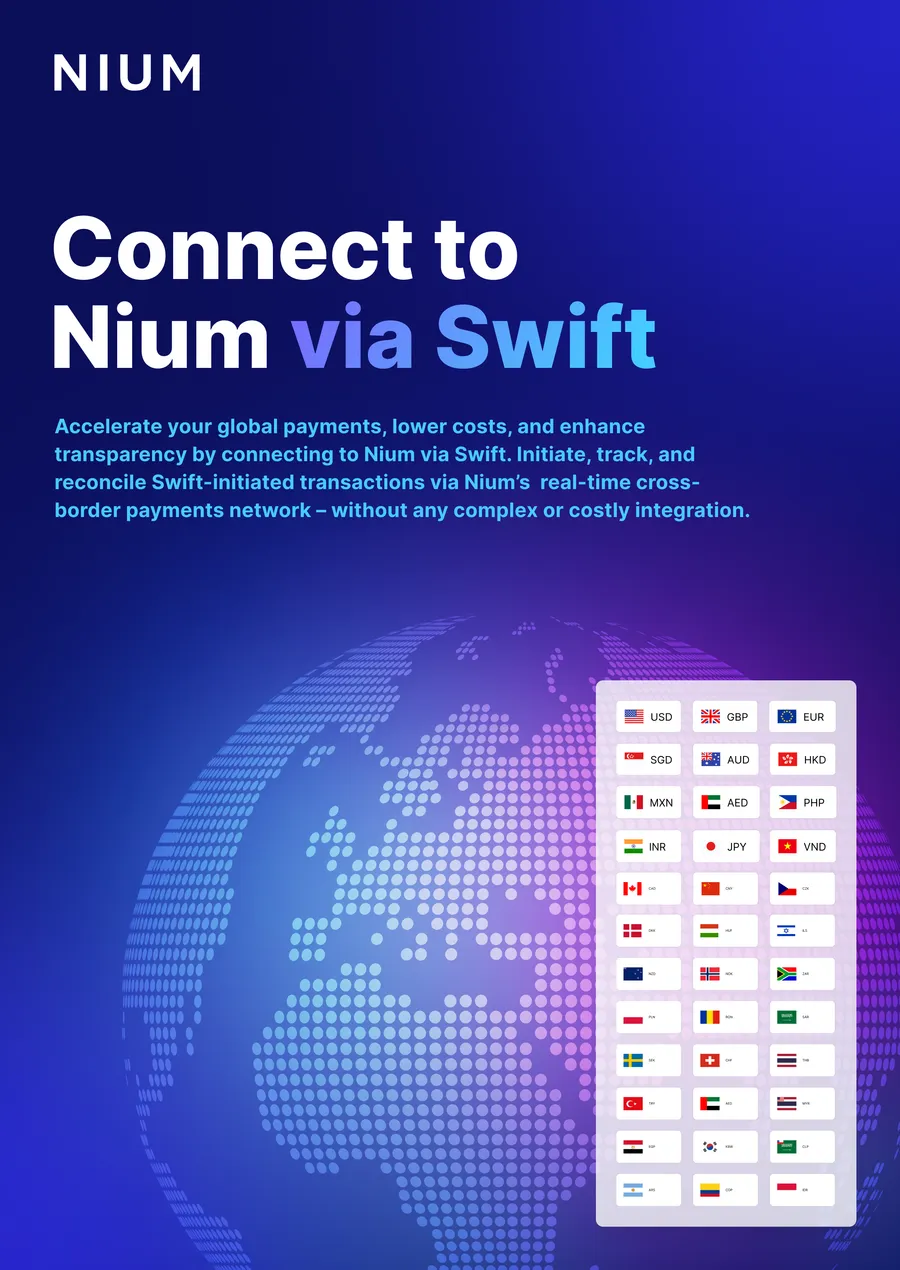The world of payments is rapidly evolving – and reshaping the world itself at the same time. When it comes to real-time payments, the Asia-Pacific (APAC) region is leading the charge. With an increasing number of countries embracing digital finance and fintech innovation, it's no surprise that four out of the five largest real-time payments markets are in Asia, leaving Brazil as the only non-Asian country in the top five. Get market-by-market insights on APAC rails when you connect with us at Money20/20 USA 2025.
This technology-first approach comes as the region also takes a leading role in global growth. The International Monetary Fund (IMF) projects an uptick in the GDP growth rate for Asia-Pacific, from 3.8% last year to 4.6% in 2023, with the area poised to contribute over 70% to global growth this year.
The embrace of modern payments can be attributed to the strong government support for real-time payments and the pressing need to integrate high numbers of unbanked citizens into the digital finance ecosystem. The region offers many opportunities for businesses seeking to expand their reach and capitalize on the thriving market. Engaging with this growth requires a keen understanding of local payment preferences and adapting to consumers' evolving expectations.
By embracing APAC’s dynamic payment landscape, which emphasizes real-time payments and digital finance solutions, businesses can ensure a seamless customer experience, build trust, and secure their position in this rapidly expanding economic powerhouse. In this blog, we’ll explore the popularity of real-time payments in Asia-Pacific, how networks vary between the countries, and how financial institutions (FIs) can engage with local opportunities.
What are real-time payments?
Spend management platforms help their business clients automate, interpret data, and identify trends to improve procurement efficacy. Businesses greatly need a better model of corporate expense management. For example:
Real-time payments have been revolutionizing the world of finance since their inception. Initially designed for domestic retail consumers, real-time payments have expanded their reach, catering to various businesses and enabling rapid money transfers both domestically and internationally. The embrace of real-time payments has been global, with The Real-Time Payments World Map showing 79 countries live with at least one real-time payment scheme, and Canada and the U.S. planning to launch new schemes in 2023.
Real-time payments are highly efficient, inter-bank electronic payments that enable funds to be initiated, cleared, and settled between bank accounts within seconds via digital payment rails once a country or region has the necessary payment rails and banking infrastructure. These methods can include bank transfers, peer-to-peer (P2P) payments and apps, digital wallet payments, QR code payments, and request-to-pay services.
The rapid growth of real-time payments illustrates the wide benefits they can offer for consumers and businesses, including:
- Cross-border capabilities: Rapid cross-border transactions enable businesses to engage with international markets more easily and reduce costs.
- Instant, efficient transactions: Real-time payments enable funds to be transferred within seconds, streamlining the payment process for both businesses and consumers.
- Improved cash flow and security: Real-time payments offer better cash flow visibility, reduced manual reconciliation, and enhanced security features such as end-to-end encryption.
- Greater convenience and adaptability: Real-time payments provide a wider range of payment options, including P2P, e-wallets, and QR code payments, while helping businesses adapt to evolving user expectations.
As APAC becomes more digital, interconnected, and ambitious in its economic aims, real-time payments are ideally placed to bring a new generation of businesses and consumers together.
Real-time payments in APAC
Firstly, the corporate card is changing. Virtual cards can have individual spending controls with special authorizations, merchant restrictions, and limits on how much — and where — employees can spend.
Real-time payments in APAC vary from country to country, according to demographics, economic policy, and technology adoption, often being spearheaded by a mix of private enterprise and public projects.
China
China has been making real-time payments a priority in recent years. In 2010, China launched its real-time payments system called the Internet Banking Payment System (IBPS) to strengthen its banking infrastructures and boost non-cash payments, and in 2021, it was ranked as the second country in the world in terms of the transaction volume of real-time payments.
Mobile wallets Alipay and Wechat Pay have around 54% and 42% of the market share, with the former also leading the way on cross-border payments via its Alipay+ network. Partners in the network include Philippines’ GCash, Korea’s Kakao Pay and Malaysia’s Touch ‘n Go, as well as others in Hong Kong, Indonesia, Macau, Taiwan and Thailand.
South East Asia
Home to some of the world’s fastest-growing economies, South East Asia has seen rapid growth in real-time payments, with real-time payments networks in Southeast Asia tipped to reach $2.4 trillion by 2025, a massive 2.3x times increase from 2020. Key to this growth is the creation of interoperable networks, with Central Banks taking a key role in building official connections between countries.
Singapore and Thailand, for example, launched their respective QR code-based real-time retail payment systems, PayNow and PromptPay, in 2021 in a world first. Malaysia, Indonesia, and Thailand now have connected networks, and in 2022 Malaysia, Singapore, Indonesia, Thailand, and the Philippines signed a deal to integrate their QR Code payment systems.
India
India launched their own Unified Payments Interface (UPI) real-time payments platform in 2016, which is now the largest market by volume, with $48.6 billion in transactions worldwide. While cash remains popular, the share of e-wallet, digital/mobile wallet payments has grown rapidly, increasing from just 6% in 2017 to 25% in 2021.
Local and international methods such as Paytm, PhonePe, and Google Pay are all predicted to grow to hundreds of millions of users in India by 2025, which is perhaps why the country has been slower to embrace foreign integrations. This year saw the first of its kind launched, with India linking their UPI system and Singapore's PayNow facility, enabling international transfers using just a mobile phone.
Australia
Within the region, Australia has been one of the slower adopters, launching its New Payments Platform (NPP) in 2022. Real-time payments covered just 5.5% of total payments transaction volume in 2022, with growth hindered by the country's strong reliance on and preference for card-based schemes. However, the benefits of these schemes are becoming more apparent, with real-time payments transaction numbers expected to rise to 2.4 billion in 2026.
Japan
Japan’s Zengin is in fact, the oldest real-time payments infrastructure in the world, having been launched in 1973. However, despite being the oldest real-time payments scheme, it still has not overtaken other payment tools in total payments volume, where Japanese consumers still favor paper-based payments, which held a 68.9% share of total payments volume in 2021. The percentage of real-time payments is forecasted to remain at 3% to 2026, which has provided less incentive for cross-border expansion, with large transactions still requiring manual work and confirmation.
Accessing APAC's real-time networks with the right B2B payments partner
To fully capitalize on the opportunities of APAC's real-time payment networks, businesses need to be able to access multiple networks individually, provide payments in the right currencies, and comply with local regulations, all while maintaining competitive foreign exchange rates.
Achieving this independently can be a daunting task for most businesses, making it crucial to find the right B2B payments partner with the necessary infrastructure, rails, and relationships.
A suitable B2B payments partner should have:
- Access to both local and international payment rails, enabling seamless and efficient transactions across borders.
- Compliance with local regulations and requirements, ensuring secure and legitimate transactions.
- Competitive foreign exchange rates, allowing businesses to minimize costs and enhance profitability.
Nium is the trusted partner for leading international businesses when it comes to payments, building our own rails to help companies access real-time payments wherever they need them. With our strong presence in the APAC region and a deep understanding of local payment landscapes and compliance, Nium provides businesses with the necessary tools, infrastructure, and support to effectively access and leverage these networks, empowering them to thrive in the increasingly competitive global payments ecosystem.
Through Nium, businesses can:
- Pay out in more than 100 currencies to over 190 countries, 100 in real-time.
- Receive funds in 33 markets, including Southeast Asia, the U.K., Hong Kong, Singapore, Australia, India, Latin America, and the U.S.
- Collect funds in local payments, holding in a virtual wallet, and pay out in local currencies in 35 countries.
- Access physical and virtual card issuance in 34 countries, including Europe (SEPA), the U.K., Australia, and Singapore.
To find out more about how Nium can support your business or financial institution in accessing the world’s real-time payment networks, book a call with one of our payment experts today.


RatesforMorePredictablePayroll.png@webp)




.png@webp)






